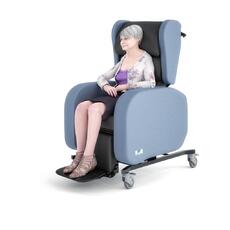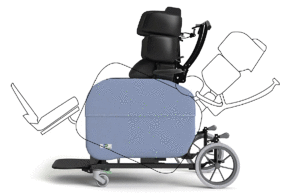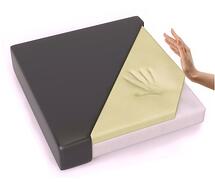Often, only the cushion of the chair is considered when thinking of pressure management, but focus purely on the cushion can actually increase pressure risk to patients. I’ve written this article outlining coming mistakes made when using pressure cushions in which you can learn more about this issue.
New industry leading research by Ulster University and Seating Matters has revealed four key areas that collectively, should be followed to ensure optimum pressure management is achieved whist seated.
GET YOUR FREE COPY OF THE CLINICIAN’S SEATING HANDBOOK FOR MORE INFORMATION
1. Load the Body
When you increase an individual’s surface area contact with their chair, you can reduce the pressure exerted through any one point. Achieved through correct seat dimensions – seat height, depth, width, foot plate height and angle.
2. Provide Postural Support

Proper support for the patient can help maintain a midline posture and manage the distribution of pressure throughout the body. Achieved through correct seat dimensions plus head, lateral and leg supports.
3. Effective Repositioning

Guidelines recommend that seated individuals are repositioned every 2 hours. This can increase blood flow and the amount of oxygen reaching the skin. Research shows that 45° tilt can maximise the potential for significant blood flow increase and pressure reduction. Achieved using tilt in space in the Phoenix and Sorrento chairs and back angle recline in our full chair range.
4. Use an Appropriate Surface
The Seating Matters cushion is a visco memory foam based cushion coated in Dartex, an anti-shear, multi

Remember, that the surface or cushion is listed as principle number 4 because if principles 1, 2 and 3 are not adhered to then optimum levels of pressure management cannot be achieved.
When carrying out a Seating Assessment, it is imperative to assess for a chair you chose provides all all four principles to be effective in managing pressure risk. We are here to answer any questions or support you with joint assessments.
LEARN MORE BY REQUESTING OUR FREE RESOURCE, THE CLINICIAN’S SEATING HANDBOOK.

*Daly, O., Casey, J., Martin, S., Tierney, M. & McVey, O. (2013) The effectiveness of specialist seating provision for nursing home residents, Ulster University.
** Note – the purpose of this blog is to give an overview of the product with some tips to consider on its use. This is not intended to be a substitute for professional or medical advice, diagnosis, prescription or treatment and does not constitute medical or other professional advice. For advice with your personal health or that of someone in your care, consult your doctor or appropriate medical professional.
** This post was originally published on http://blog.seatingmatters.com/the-four-principles-of-good-seating

